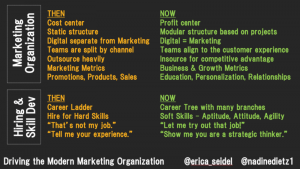Video needs sound. Almost as long as creative minds have put together moving pictures in order to engage and delight their audiences, they have recognized the need for sound effects, music, and dialogue.
But social media is challenging conceptions that have been common sense for decades. On Facebook, Twitter, Snapchat, and other networks, we’re interacting with each other in ways that are simply different and sometimes opposite of what would have been considered ‘normal’ just a few years ago.
Those changes, of course, matter to marketers. If your audience communicates differently, you need to adjust to their preferences in order to make sure that your message continues to be effective. In social media marketing, that means embracing soundless video.
The Age of Video in Social Media
Over the last few years, video has moved from a luxury to an essential way of communicating with your target audience on social media. Today, 60% of marketers use videos as part of their social media strategy, probably because 4x as many consumers want to watch videos about a product as opposed to reading about it.
Every day, users on Facebook and Snapchat alone each watch 8 billion videos respectively. Video, in other words, has become an integral part and perhaps the dominant form of content on almost every social media network. Cisco projects that videos will make up 80% of all internet traffic by 2019.
Challenges in Breaking Through the Video Noise
Of course, increased effectiveness (and the knowledge of it) brings with it increased competition. In fact, more than 60% of marketers plan to increase their video budget in 2017. Trying to reach your audience through moving pictures is becoming more difficult if all of your competitors are trying to do the same thing.
In addition, recognizing the effectiveness of the medium, networks like Facebook have made videos easier to watch for users–and more difficult to use for marketers. They introduced Auto Play features, meaning that the video will start playing automatically as you scroll past it in your news feed.
To minimize intrusion, of course, these videos play without sound. In addition, increasing mobile uses while on the go also increases the chances that your audience watches the entirety of a video (and not just its auto play) without turning up the sound and disturbing their environment. As a result, one estimate puts the amount of videos watched without sound at no less than 85%.
One notable exception to this soundless trend is Snapchat. As Adweek reported, ads on the network actually perform better with attention-grabbing audio. But on most networks, and especially Facebook, brands now need to have a strategy for dealing with video views in which sound is nonessential.
Building Soundless Videos to Maximize Your Success
To build the perfect soundless video, it pays to go back to an era in which sound wasn’t an option. In fact, one researcher points to silent films in the era of Charlie Chaplin for examples on how excluding sound and voices can actually enhance the success of your video. The key is focusing on visuals that are both easy to interpret and entertaining on their own right.
Of course, the best soundless videos go beyond these core principles. Captions, for example, can significantly improve the success of your videos even as users watch them without sound. One internal Facebook study showed that including captions on videos increased average view times by 12%. Captions can add the same context as sound, allowing your audience to fully grasp the message you’re trying to convey even while watching on auto play or on the go.
In soundless video, the first few seconds also become more important than ever before. As Hootsuite mentions, you don’t have the luxury of using sound effects to draw in your audience. All you have are your visuals, which means focusing on a few best practices for your video:
- Show captions, logos, and products within the first three seconds of the video. Nobody wants to be guessing or trying to figure out exactly what it is that they are watching.
- Choose an alluring but accurate video thumbnail image and title to draw in viewers.
- Use strong imagery, on-brand colors, and consistent themes to help captivate and delight.
- Create interest through lifestyle and product shots, recognizable spokespeople and influencers, and/or scenes with action and vivid backgrounds.
All of these best practices make sense for any type of video. But they are especially effective on social media, where your audience is more likely to watch without sound.
Finally, it always make sense to learn from some of the most effective marketers in the industry. This list of soundless social media videos can give you inspiration of creating amazing visual content without the need for essential sound. Outlets from Tasty to Business Insider are beginning to take advantage of the limitations and possibilities that this new type of behavior is creating.
The Age of Soundless Video is Already here
On its face, soundless video may seem counter intuitive. After all, you’re looking to engage your audience in as many ways, and through as many senses, as possible. But given recent developments on Facebook and other social media platform, removing the sound from your video–or lat least making it non-essential to convey your message–is suddenly becoming effective.
In other words, we may be entering an age of soundless video in social media marketing. Is your business prepared for it? Can you say with confidence that even as your audience begins to change its preferences, your brand will continue to occupy a major space in their attention span?
Digital & Social Articles on Business 2 Community(77)
Report Post







